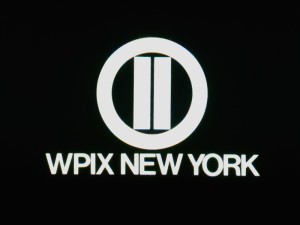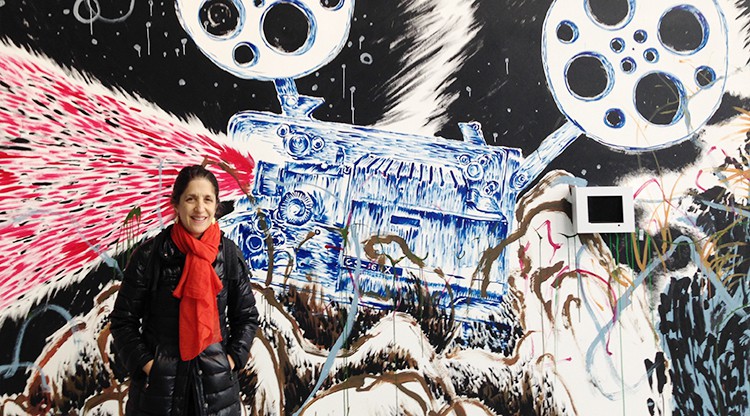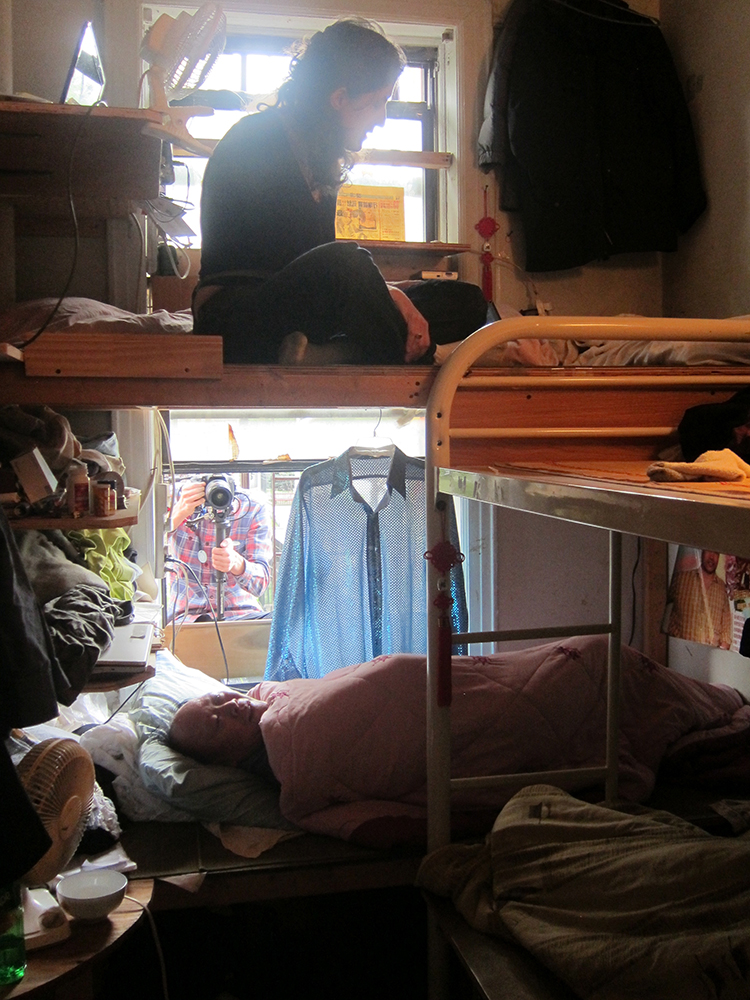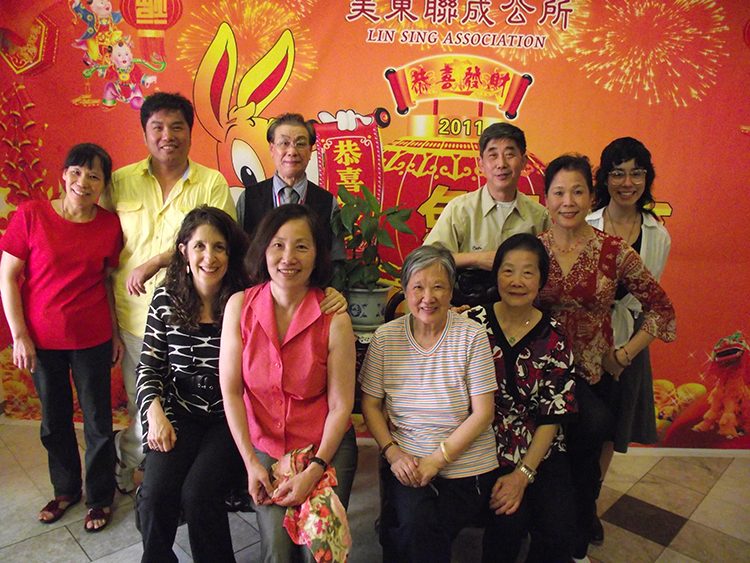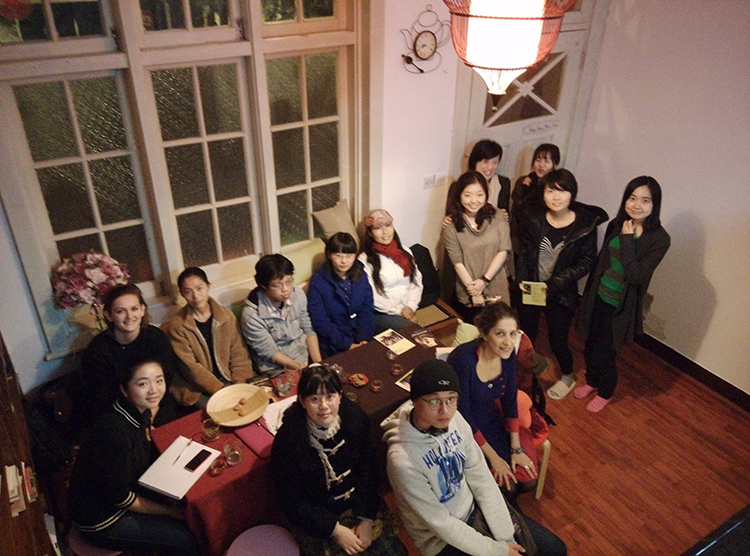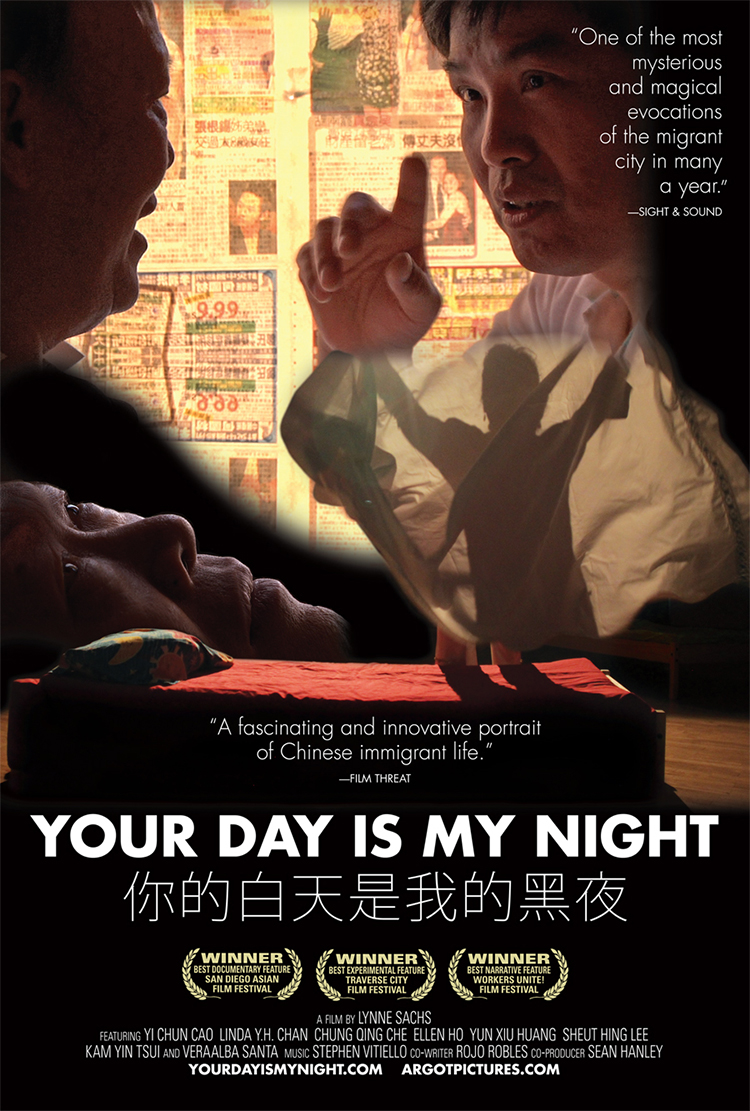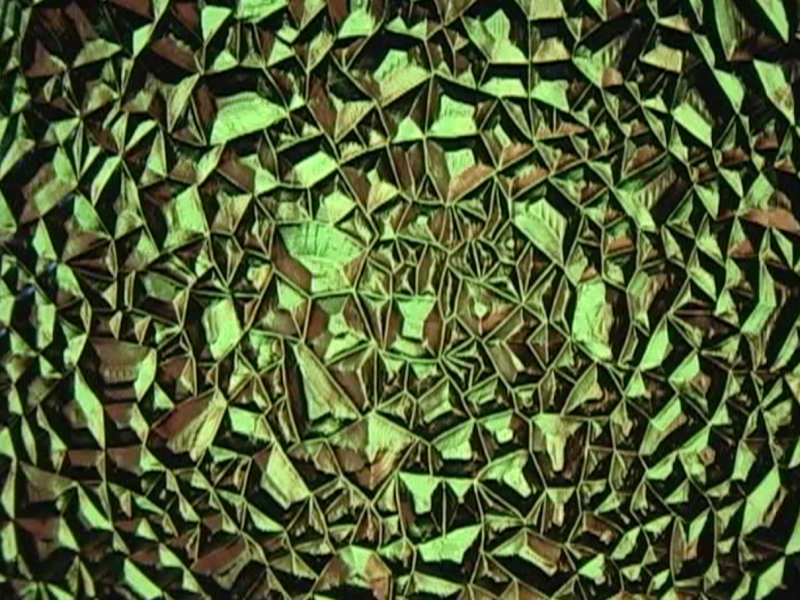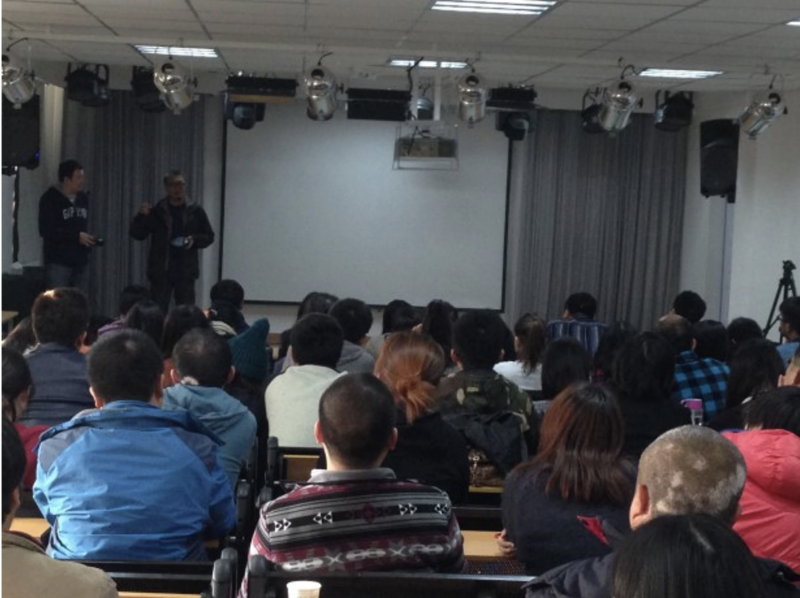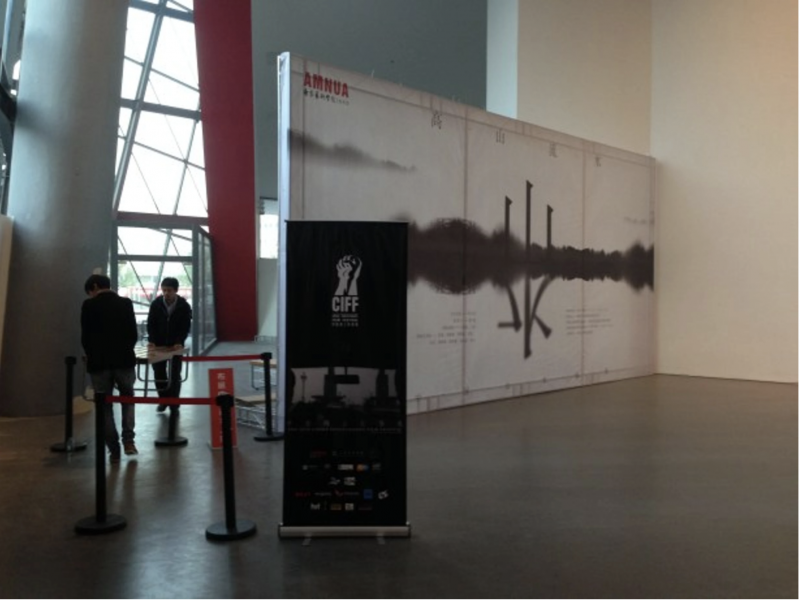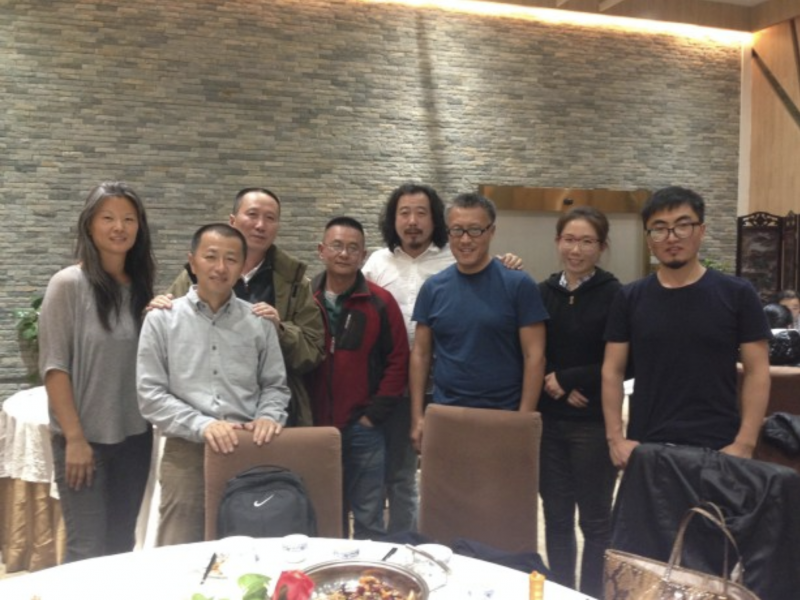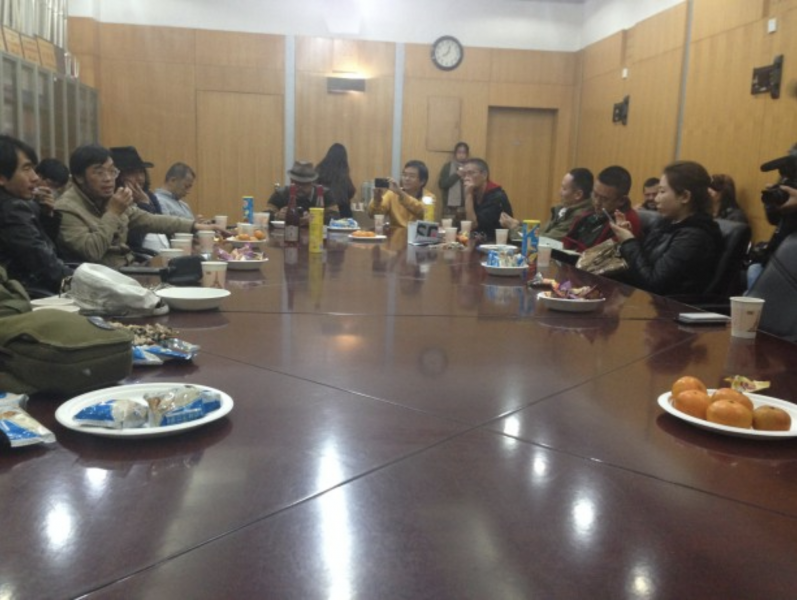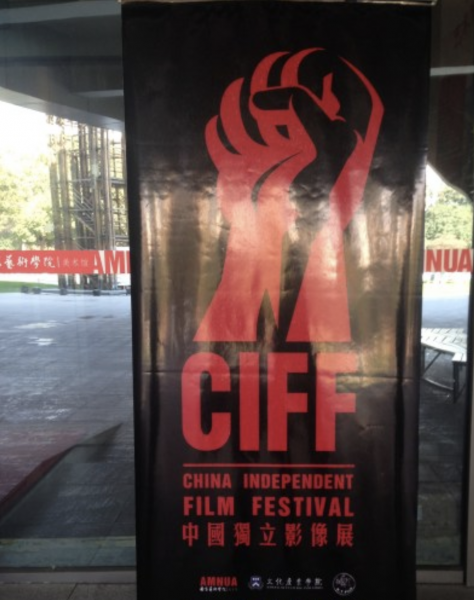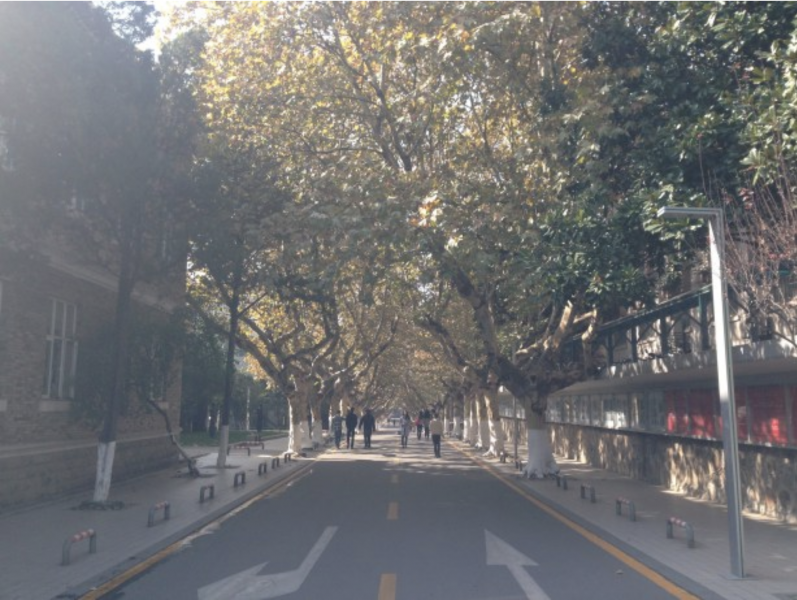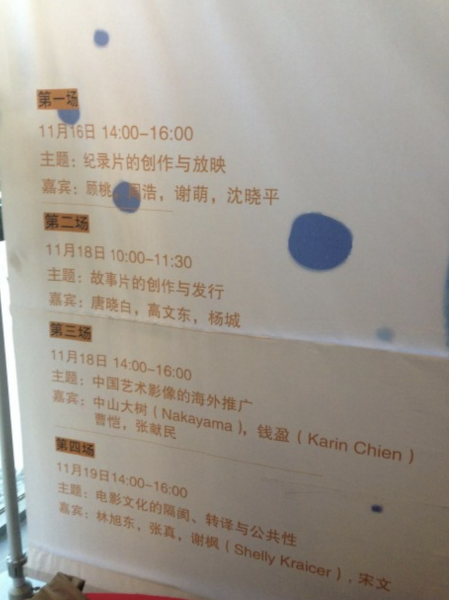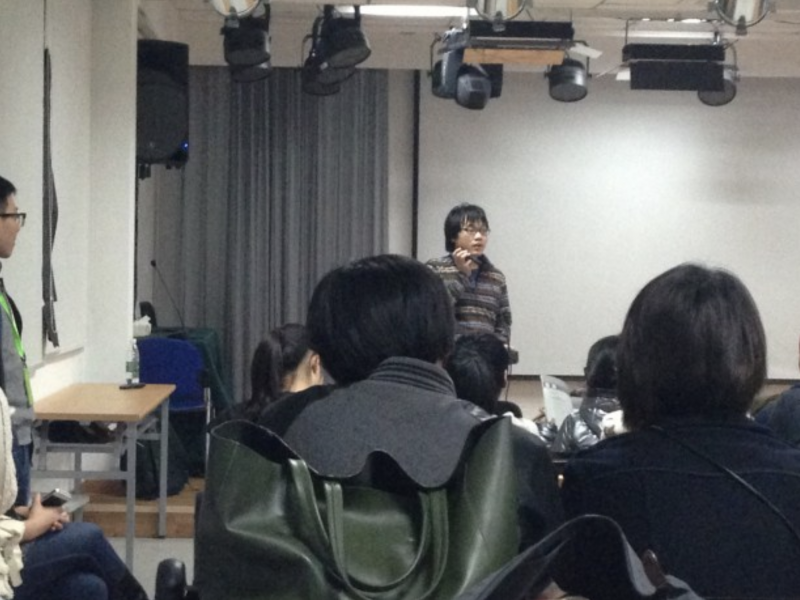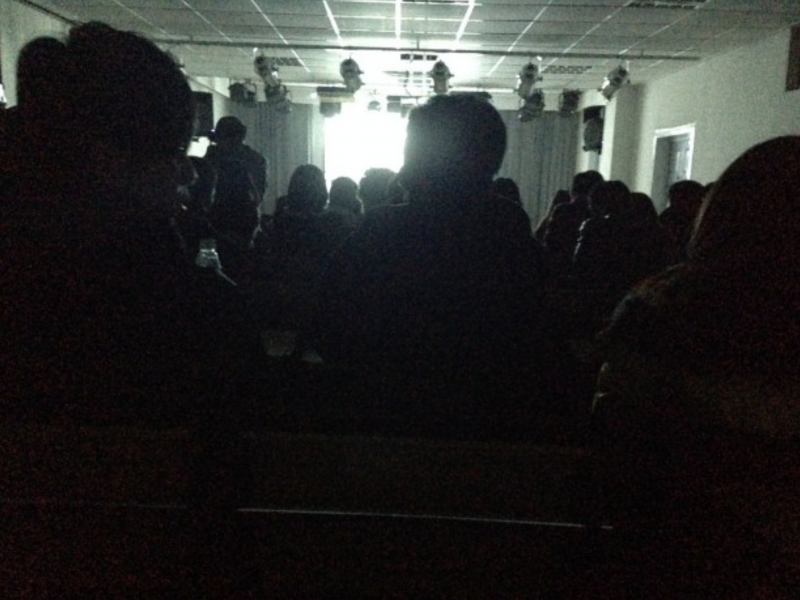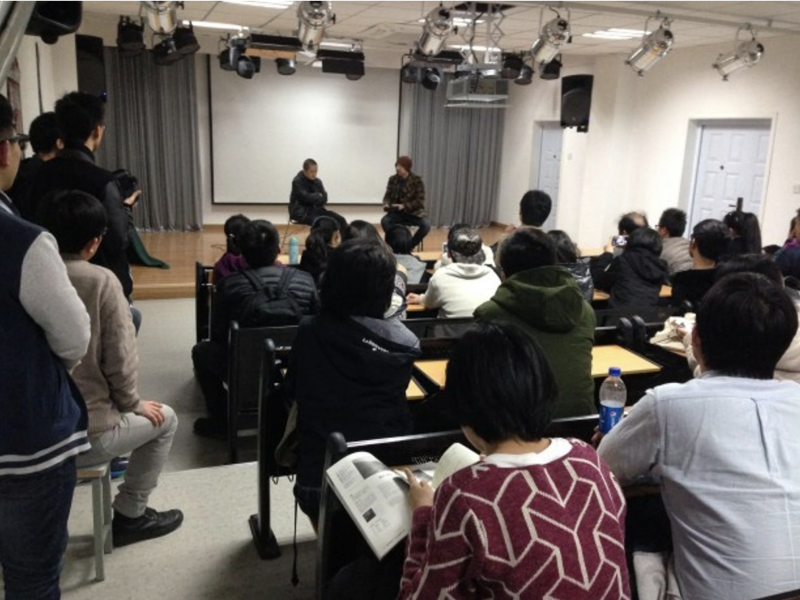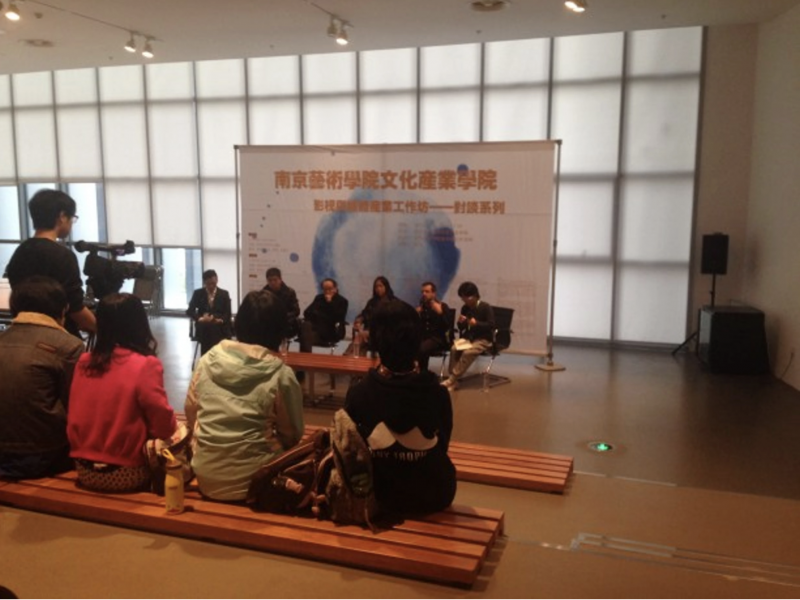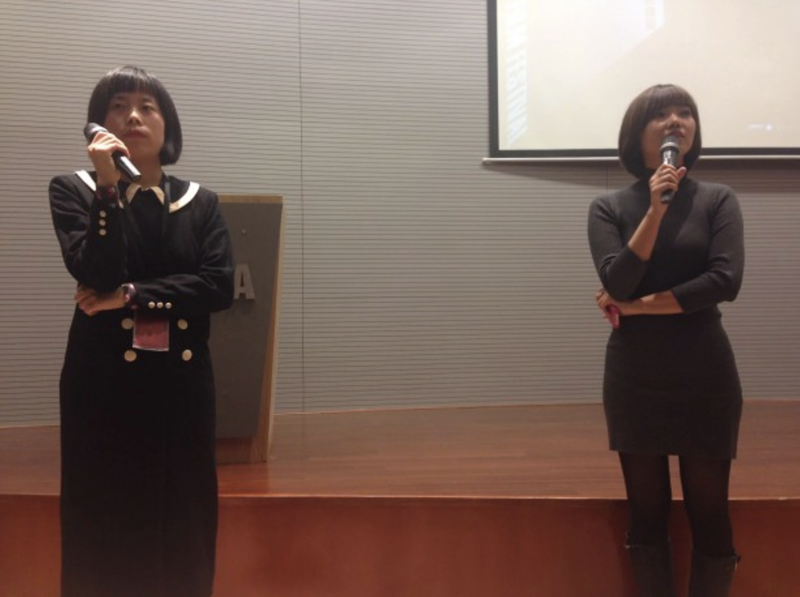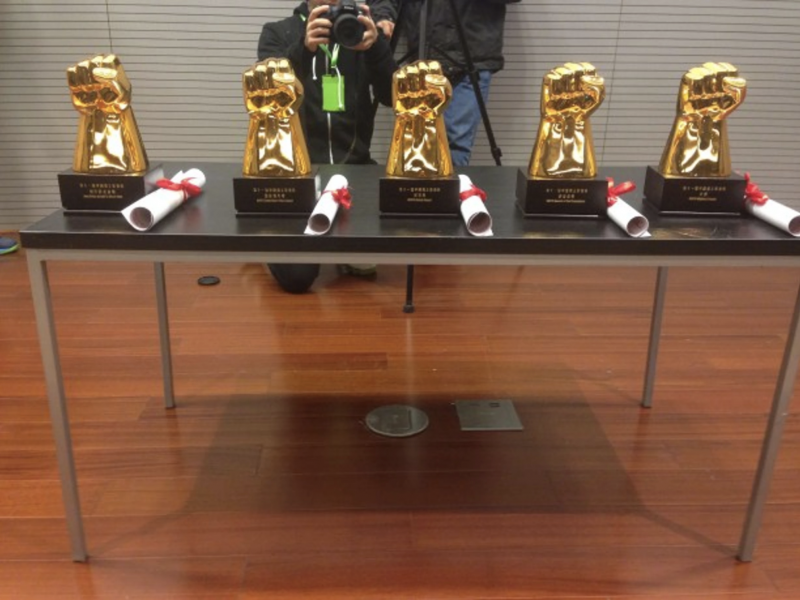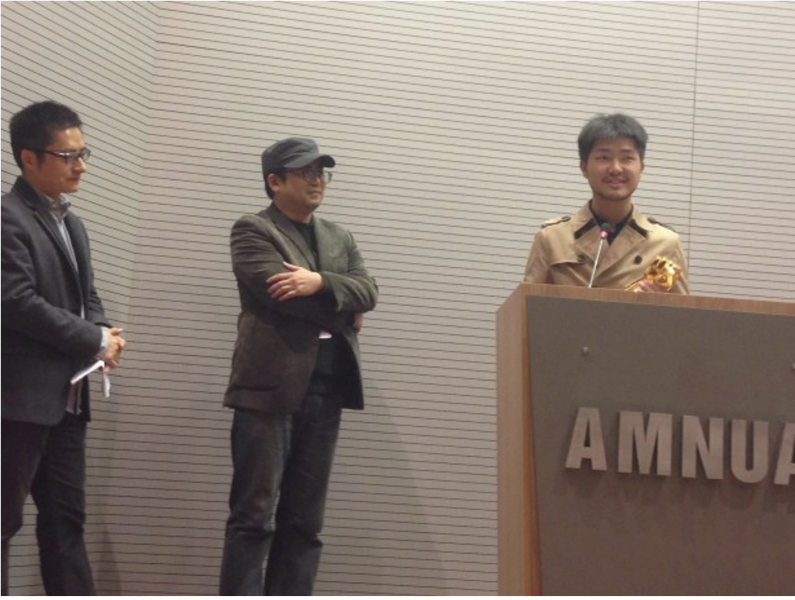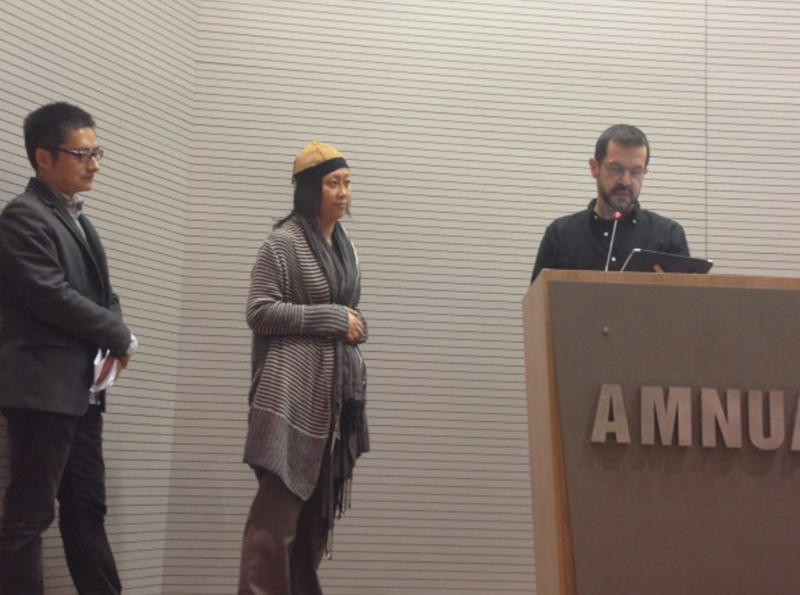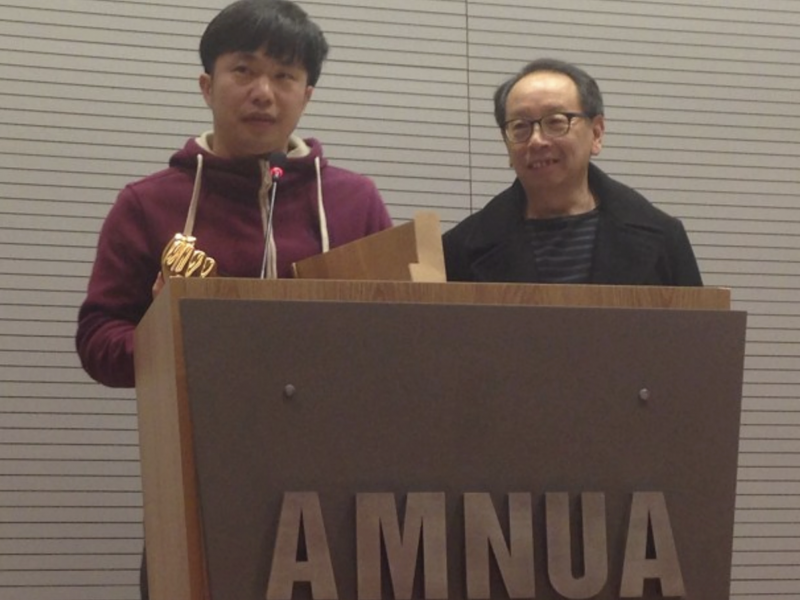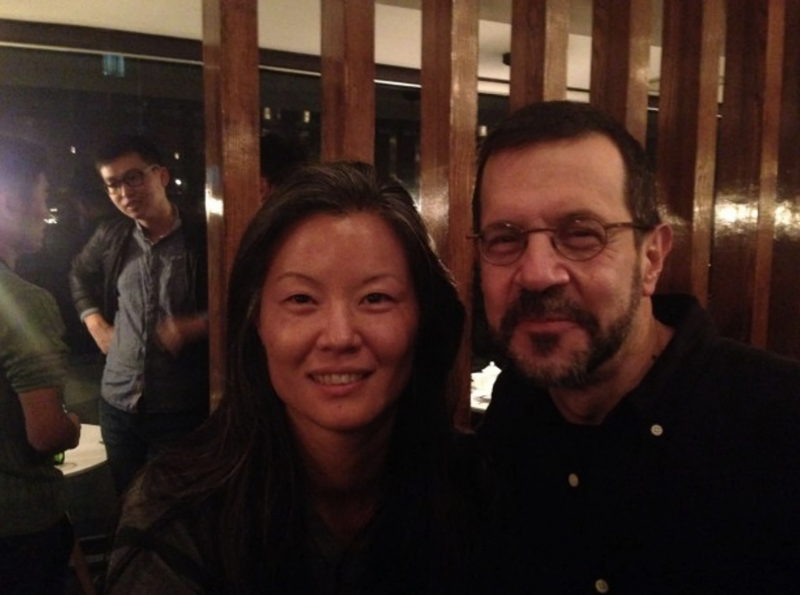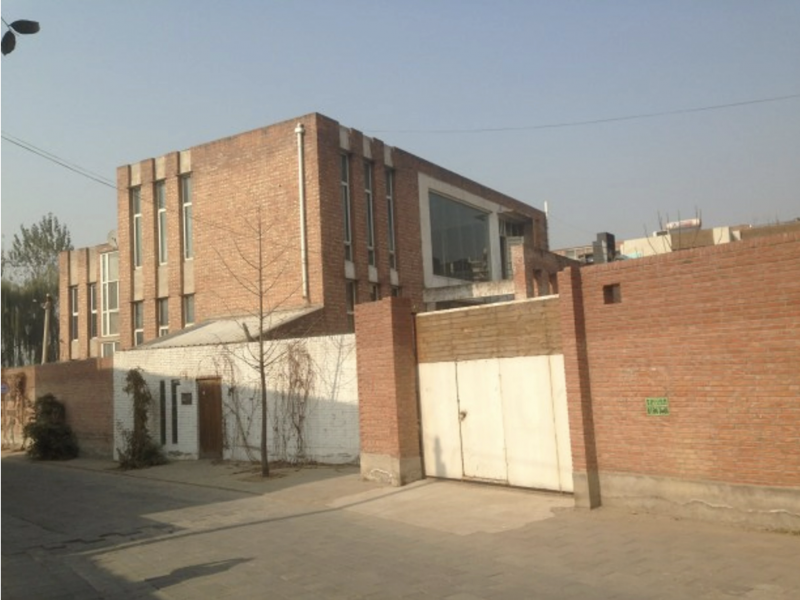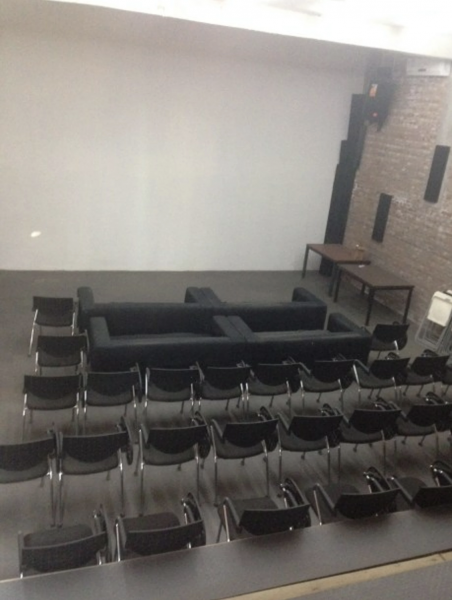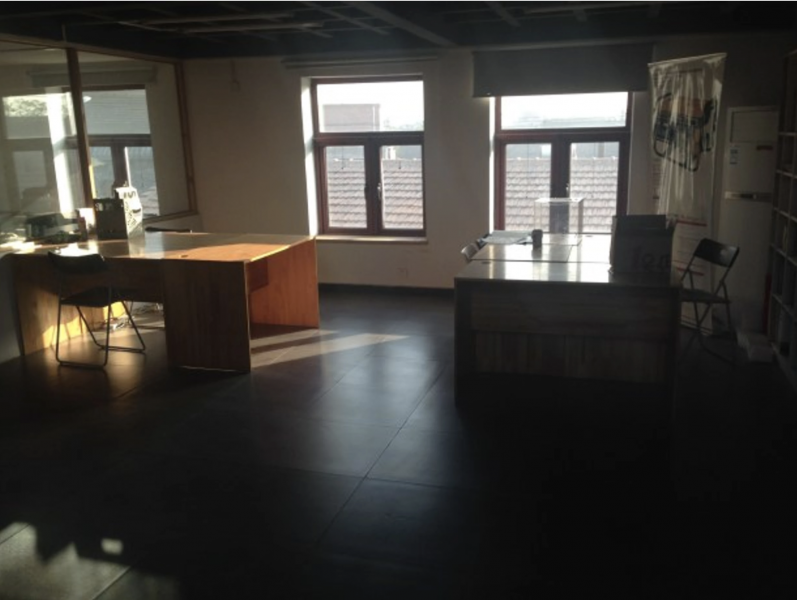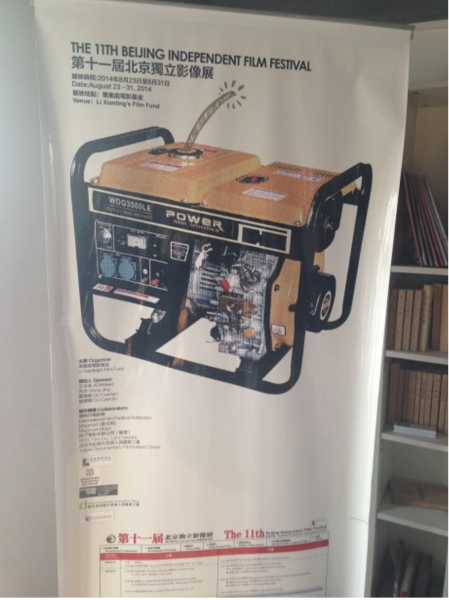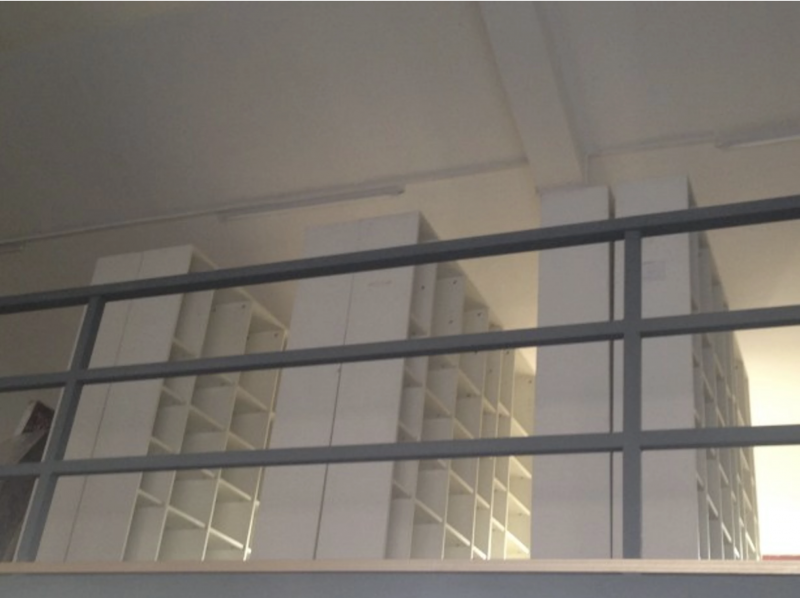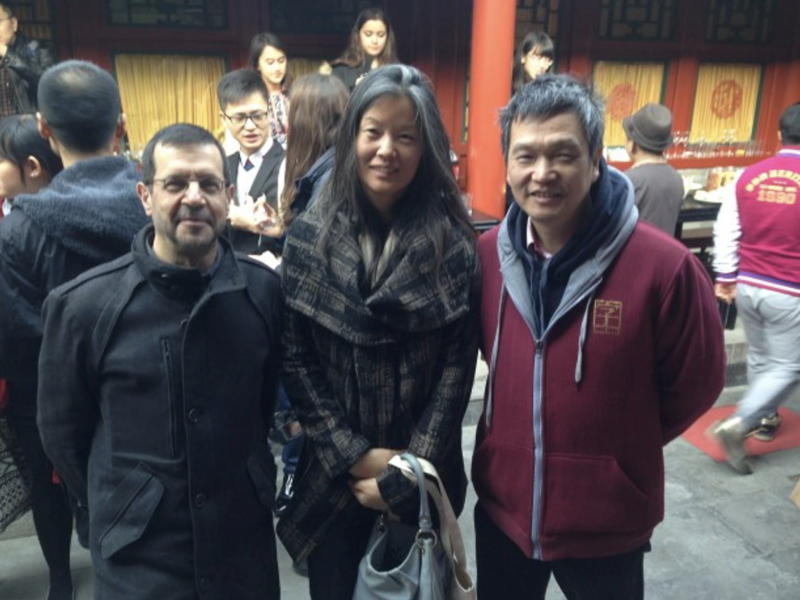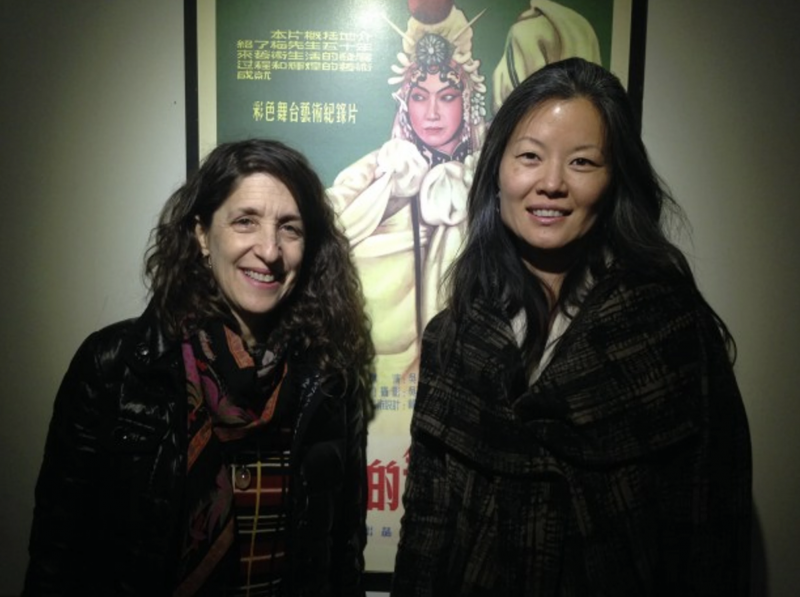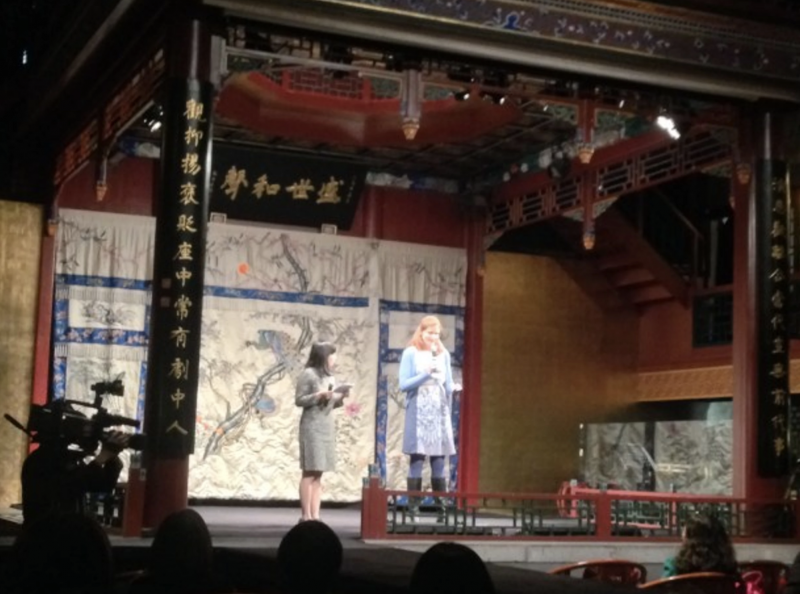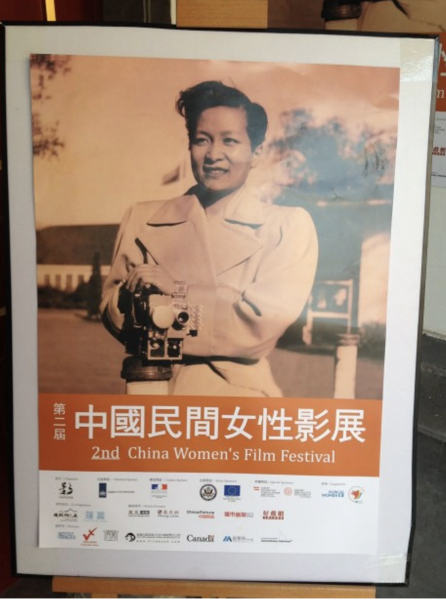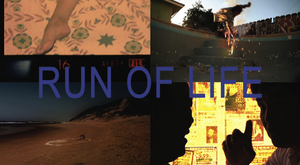Every Fold Matters
by Lizzie Olesker and Lynne Sachs
1/28/15
ONE – worker (Ching)
TWO – worker (Veraalba)
THREE – customer (Tony)
FOUR – Washing Society laundress (Jasmine)
PROLOGUE
Video montage of Chinese laundry worker Mr. Ho.
In a laundromat.
Customer looks into dryer and discovers his clothes are not there. Discovers clothes piled in a cart still wet. Addresses FOUR who is in the audience.
THREE
Hey, is this yours?
Is this your stuff? Because that was my stuff in the dryer and you took it out.
You touched my clothes.
Can’t you see they weren’t done?
So, you just opened the door, took out my stuff, and dumped it here in the cart, didn’t you?
It’s still wet. Here- you feel that? You feel that? They’re still wet.
You touched my clothes and
you could feel that they’re still wet.
Let’s see how you like it-
What do you think? This dryer belongs to you?
Excuse me Miss, wait, do you work here? Are you working? We have a problem over here, can you help me?
Music.
Performers ONE & TWO enter.
They open dryers, looking inside… for something lost?
Forgotten?
They pull out clothes & pieces of cloth, perhaps picking up speed.
Words are written on the clothing and, depending on where the performers
are in relation to each other, different short phrases are formed, in the same spirit that people try on clothes that sometimes fit and other times are all wrong.
time pocket
mind things
fold personal
show me she
nothing to say
wanders zip
stain
feel that
other
deep pocket
hole
zipper mouth
tug drain
button
show me time
personal
stain mind
tug drain
fold other
button
deep pocket
hole
She me
feel pocket
to say
button inside
zip time
wanders
ONE holds up sign “Atlanta. July 1881.”
Performer FOUR turns on candle lamp.
FOUR
“We the members of our society, are determined to stand to our pledge and make extra charges for washing, and we have agreed, and are willing to pay $25 or $50 for licenses as a protection, so we can control the washing for the city. We can afford to pay these licenses, and will do it before we will be defeated, and then we will have full control of the city’s washing at our own prices, as the city has control of our husbands’ work at their prices. Don’t forget this. We hope to hear from your council Tuesday morning. We mean business this week or no washing. Yours respectfully, The Washing Society, 486 Members.”
ONE turns on television with remote. Snippet of Chinese soap opera.
TWO
It’s not like a man walks in and I know for sure…
I don’t care about that kind of stuff.
I look for other kinds of signs.
The stains that interest me are usually yellow,
the ones that come from the inside of the clothes,
the piss, the sweat, the vomit.
(jump cut)
She’d tell me a certain thing is special… What does that mean, special? They all say it’s special.
She’d tell me—this one time, she said that her blouse-
her green blouse
was full of loud, awful music–
and she didn’t want to hear it anymore
She said that the green thread in her blouse was a
green snake
So she said she’d pay me extra to get rid of it-
all that music that made her feel so bad
She wanted me to pull it all out
She said
get all that noisy, snaky green out of my blouse…. (pause)
(jump cut)
That’s it. I don’t have anything more to say.
Chinese soap opera returns to TV. ONE watches and weeps while folding.
Onstage performers speak simultaneously in three languages (English, Spanish, & Chinese).
ONE & TWO
I don’t want to talk about it.
Nothing to say.
sorry–
Let’s talk about something else.
Not today. Don’t want to say-
sorry
Nothing
sorry
Why do you want to know?
Nothing interesting.
Just a job.
My boss says no.
Music.
ONE, TWO and FOUR perform folding T-shirt dance including: roll between legs, dropping, lasso, ball to chest, crucifixion, offering, accordion, rest, corner folding, fall forward, getting tangles, peeking through hole, twisted up, untangles, throw to floor. Eventually distinct sculptures meld into single unit.
Shaking shirt between each movement as punctuation.
TV cuts to soap opera (silent and then with volume) which ONE watches while she folds. So involved with show that she begins to weep to herself.
Performer THREE (customer) re-enters through doors of Laundromat with
large bag of laundry, dumps the clothes on ONE & TWO
THREE
How do you know it’s time to do it?
You don’t have any clean underwear, bottom line.
You can get away with socks but not dirty underwear.
Besides, it’s very cold out there … warm in here.
THREE exits.
ONE
I think about other things when I’m doing it.
My mind wanders.
ONE and TWO speak intimately like co-workers while doing gestural movements, while FOUR is more separate.
TWO
All you get is their name and their bag of dirty stuff- you write it on a tag- a tag for all that sweat, coffee, period stains and… whatever.
ONE
You know nothing about them but you also know more than you want to know, you know?
TWO
It’s a personal thing, if you think about it.
It’s like getting to open up someone else’s closet, someone who you don’t know… seeing what’s inside… you can tell someone’s story just by what they’ve worn, how it’s dirty- you know?
ONE
My mother in Hong Kong
She showed me
I used to—
no dryers. Just hang dry.
I help my mother with the easiest stuff. Like, folding underwear.
And then you practice
Practice practice
TWO
Make your own improvements.
I do it like this. Fold one, two, three.
See? My way.
FOUR
In Ancient Rome they cleaned clothes with animal and human urine along with soap, then they took sticks and beat it.
ONE
I work part time, six or seven hour shifts, five to six days a week.
TWO
I meet different people.
I almost remember each face. Almost…each face of every customer.
THREE
A roll of quarters, a cup of coffee to go, a newspaper. Sometimes the ladies talk to me.
But most people, they drop it off. They just don’t have time anymore.
ONE
Mostly we have drop off now. The neighborhood’s changed. It used to be that everyone came in to do their laundry.
There’s one guy who’s always losing his ticket. Nice man, but too busy.
THREE
I’ve seen that guy. Comes in every week.
“I am here to pick up my laundry.”
ONE
“Where is your ticket?”
THREE
“I am so sorry. I forgot my ticket. I know I have it somewhere. Hold on. Let me check. Could you just look me up?”
ONE: “This is the last time. You always lose it.”
Have preset folded clothes package ready for THREE.
THREE: Thank you, thank you.
FOUR, from another part of Laundromat-
FOUR
I take in laundry just like so many, earning 4 to 8 dollars a month, for more hours than I can count. I have increased my earnings of late with the help of my children and the adding on of several new clients. Like you, I take in loads on Monday mornings, returning the clean goods on Saturday. Our soap is made from lye, starch, and wheat bran, and our washtubs we make from beer barrels cut in half. We carry our water from the well, pump and hydrant down the road, boiling and rinsing and hanging in our own homes. We press using a few hot irons at a time and weather permitting, we work outside too, in the shade.
ONE and TWO pull out string with tiny clothes.
They watch it move in the air…
THREE pulls out large women’s underwear and clothes with words from machine.
In English, Spanish, Chinese:
ONE & TWO
I don’t want to talk about it… nothing to say… It’s the same all the time… what?
Can’t talk. No time. Come back later. Nothing to say…
ONE
Oh, there was this one time … a guy in a jacket and tie came in …
Interrupting ONE, pointing to shirt with word NOTHING on it )
THREE
It’s still there.
ONE
Sorry, I tried-
THREE
Look at that. Can you see it? Look, right there, right there.
ONE
I tried but it’s a tough one.
THREE
Look at that… see that stain. Still there.
ONE
We tried our best.
THREE
That’s it. I’m not paying.
ONE
But- Everything else- washed and folded.
THREE
You didn’t get it out.
Music.
ALL do gesture dance without Tshirts this time. Now with element of disgust.
TWO turns on television.
Filmed interview with ONE in laundromat begins. ONE, TWO, and THREE have backs to audience as they perform same small gestures from earlier, this time without clothing.
ONE
Chinese New Year and we were full of people washing their clothes, only not the kind of laundry we usually see, like big bags of sheets and family clothes… No, these were younger, maybe people in their twenties, and they’re doing just a single pair of skinny pants or a shiny blouse to wear to a party, like they need to get just one or two things clean before going out to get drunk or something, you know? They just want to clean something quick to look good that night, you know?
One girl, a young woman, she was in a big hurry, like they all are. She threw her outfit into the machine, puts it on RAPID & COLD, then she leaves to go to the store and get a cup of coffee or something. She comes back a little later, interrupts the cycle and …
…bad for the machines, you know- breaks them down.. And then, she comes over to me- I think maybe she knew I was watching her- and she asks me to watch her clothes for like a half hour or something, and says she will pay me $5 for my attention. Then she like just runs out the door- just like that. So, when I go to put her skinny pants and little blouse into the dryer, five wet $100 bills, you hear me? 100 dollar bills- they fall out of one of pockets.
INTERVIEWER
(off camera)
You’re kidding!
ONE
And it was busy, like I said, with lots of customers, so no one noticed. Plus, when I saw that money, you know, I caught it real fast… like this.
(Closes her fists… Long pause)
INTERVIEWER
So what happened to it… the money?
ONE
What do you think?
ONE and TWO create laundry sculptures and attitudes with clothes and their bodies, elegant and awkward poses. THREE takes “word” clothes out of dryer and folds.
TWO picks up a yellow & brown print shirt from a dryer,
puts it over her head and face.
ONE
I don’t look at what customers are putting in-
what they’re folding, I don’t look at their clothes- but sometimes you can’t help it, you know?
ONE puts yellow skirt on her head, strings hanging down.
TWO
The stains I think about the most are usually yellow, the piss, the sweat the vomit. The shit you don’t want to see, the shit you don’t want to touch.You look for a plastic bag, you hold it like this, then you throw it in the hole, shut the door, get out your quarters.
ONE puts small girl’s pink dress over face, with eye hole. We see THREE in back doing his own laundry thing, sitting, staring, listening to music.
TWO
See that guy, he’s washing all these pairs of women’s underwear- black- red, pink, lots of lace- pretty sexy and also kind of… big? I wonder who he’s washing them for, folding them so carefully. I guess they’re his wife’s or his girlfriend’s, or maybe they belong to… him?
ONE puts flannel nightgown around her shoulders as cape/shroud.
TWO
Sometimes a customer, she’ll come in and she’ll say
a certain thing is special and I wonder what special really means?
They all say special… this blouse- or that skirt- it’s really special, they’ll say.
It means be careful with it or else…
TWO puts a baby’s onesie over hands, open & shut fist.
ONE puts a green, slinky shirt over one arm, facing away.
Continue “sculpture” choreography, building layers and intensity…
TWO begins pulling off the layers and placing them into the wash.
ONE continues layering, slow motion…
ONE & TWO’s thoughts/lines tumble over one another; have this section work aurally with Mr. Ho’s speaking patterns.
TWO
(Spanish)
I don’t want to talk about it.
Let’s talk about something else.
it’s hard that’s all
boring
goes on and on and on
(English)
Sometimes the boss comes and watches you and he says go faster, do more… come on, come on… (pause)
Or this one time, a lady came in and she said I had
ruined RUINED her favorite pants, she said I’d broken the damn
zipper and made a tear or some shit, and I didn’t even remember her
her stupid fucking pants so I go, what pants, where?
And she starts pointing her finger at me
and she goes, you’re gonna pay for it
you’re gonna pay for a new pair
those pants cost me 85 dollars or some shit
I’m gonna talk to your boss talk to the owner
Go ahead, I say
And she says
I’ll make sure they take 85 dollars from your pay, I’ll make sure you
pay for it, you little whore, you little bitch-
I start to get mad now but I don’t want want to go off on her or nothing, like I can sometimes,
so I just say okay show me the pants- the zipper.
So she opens up her bag- this big old plastic shopping bag-
And… it’s filled with all kinds of shit-
old magazines, wrappers, socks and pieces of food–
layers and layers of like, garbage, you know?
So, now I see that something’s not right with this lady,
Something’s all wrong….
There were never any pants- no zipper- no rip-
At least, I don’t think so-
She must’ve been looking for something else from me.
ONE turns on TV.
VIDEO Mr. Ho working (2 of 2)
ONE
Sometimes they hide the stains. They’ll put it in a bag and won’t tell you. Maybe they think you won’t take it?
TWO
Sometimes they will get angry when they think the color changed-
ONE
Or a stain didn’t come out.
TWO
They’ll put the dirtiest clothes at the bottom of the other clothes. “Use bleach,” they say. Why are they so scared of a stain? Do they think it says something they don’t want anyone to know?
ONE
I’ve been in the laundry business longer than most of them have been alive. I know how to rescue a shirt. They say I work miracles on their dress shirts.
TWO
But those stained ones …
ONE
Yeah, the underarms.
What are you gonna do?
TWO
Hah, just say keep your arms down! Don’t show it…
ONE
My customers count on me. They think we do magic.
TWO
Remember that guy used to come in, he would talk to himself, always watching us. And one time he said, “Be careful of what’s inside that machine, what’s inside there.” And he opened the door and yelled, “Don’t you see it? The shadow.”
FOUR
Before you, see:
your mother
wooden rack in the bathtub, hung with stockings
first washing machine and e- lec-tric dryer
done almost every day, post 1950, a different pair of something
clean, very clean
And before her
your grandmother
with basin and wringer
boiling water in
tenement apartment
before that
there was me
post-civil war me
new dawn
taking in laundry
for wages
for freedom
of a kind
a long line hung
drying in the light
moving to before, but still
scrubbing on rock with sand
river flows
stick hits
back breaking hot
for days on end
from the colonies
and beyond to
whiten in sour milk
rinse through fire ash
before that
layers and layers of clothes never washed
dried flowers and perfume cover
after the fullers of ancient rome
urine mixed with water
jump and stomp with
bare feet
back to
Egyptian salt scrub
ancient sun dried
keep going further and further
following that line of time, clothes, ways of doing
when only
one fur one scrap our back
before that
when we first come
into cold air
not yet wrapped but
naked, so naked
and clean
TWO pulls string from pocket, hands one end to ONE.
They hang another clothesline.
TWO moves clothespins as if they were numbers and she’s adding up figures like “laundry math.”
ONE
I started working in a laundromat when I turned 15. I’m 60 now. So that’s 45 years. And I work only part time, 5 or 6 days a week, 6 to 7 hours a shift. And each day, I do about 10 -15 loads of laundry so that’s 70 loads a week, 280 a month, 3,360 a year. And then, over 45 years, I have done 151,200 loads of laundry (or something like that) since I began. And then when I had babies, well I was doing my own two times a week, that would be eight times a month, so that’s 78 loads, but wait a minute, each time I did it there would be 2 loads, wait, that’s too much, so that’s about 72 loads a week including the store loads, and my oldest child is 41 now so that would be 3,744 loads a year, is that possible? But wait, minus what my son did himself when he turned 14 or 15, (yeah I taught him something).
ALL put on red palm-coated work gloves and dance emotively. Emphasis on falling.
THREE
I lost—
ONE
Hello. Can I help–?
THREE
I lost a lot– Did you find–? It was folded up in rubber band.
ONE
Where was it?
THREE
In my pocket… a lot of money.
ONE
I didn’t find it.
THREE
You must have. It was—
ONE
Nothing there. Nothing at all. We give it back when we find it.
THREE
I don’t believe you.
ONE
Did you look everywhere?
THREE
You took it. You took my $500!
ONE
If I find any money- I return it. Even if only $1.
THREE
I should call the police. Police!
ONE
No- please- not here.
THREE
I will.
ONE
Don’t call. Please, mister. No money here.
THREE
Are you calling me a liar?
ONE
Maybe someone else took it.
THREE
Who else could do that?
ONE
You left your things in the dryer a long time.
THREE
Are you saying it’s my fault?
ONE
You go outside and not come back… you fall asleep. Maybe someone else-
THREE
To hell with you- to hell with you people!
THREE leaves
ONE
And he left. Just like that.
TWO
He used to be in here all the time.
ONE
Gone now.
TWO
Maybe he found somewhere else…
FOUR, reappears, carrying an electric candle, like a ghost.
FOUR
We come together now for higher pay, respect and autonomy, forming our own trade organization which we call the Washing Society. There are just 20 of us, but we will grow. We will establish a uniform rate at one dollar per dozen pounds of wash.
Look around you now. This city has more home laundry workers than male common laborers, and that is a fact. We will hold a mass meeting and call a strike. We will go door-to-door, canvassing all over this city, and in just 3 weeks, our numbers will grow from 20 to 3,000 strikers. We urge you to join or honor the strike, young and old, black and white. No matter if they arrest us, or fine us, let our proposed fees inspire you. We say to our City Council that we will pay those $25 fees rather than be defeated.
We mean business… or no washing.
THREE
As himself.
So, I have a washer drier now. Haven’t been to the laundromat in years. But my washer broke, and the dirty underwear were piling up, so I had to go back. I hauled my bag of laundry down to the corner. I was even looking forward to seeing the lady there who always yelled at me for forgetting my ticket. But when I got to the corner, the laundromat was gone.
In its place was an overpriced bakery with twelve dollar slices of cake and seven dollar pots of tea that you are not allowed to share.
ONE & TWO reprise- folding dance
THREE (to audience)
Another Laundromat closed in my neighborhood.
I don’t know where they expect you to do it.
It’s one of those neighborhood places that you think
will be here forever, something people will always need.
And it’s one of the only places where you still can talk to strangers.
TWO
I make friends without ever knowing their names.
ONE
One customer is nice, the other picky.
TWO
I almost remember each face.
ONE
You have to be nice. And patient.
TWO
Almost… each face of every customer.
SCREEN Monologue with FOUR (as herself )
FOUR
Who taught me how? My Grandmom did… she’d say to me:
Everything has to be done right.
Everything has to be…to look…
come out a certain way.
You don’t want those creases.
You don’t want not to have it right, you see?
She’d go on and on… it meant everything to her…
she’d say:
you want it to look a certain way.
And that’s how you fold.
You hold it like this, and then you pull it over like that.
One-sies, Two-sies- Three-sies!
Otherwise, it’s not going to be right.
It will come out all wrong.
So pay attention to me now (Snap)-
Listen!
I am passing this down to you.
Like my mother and her mother and…
Don’t do it like that.
Take your time. Make every fold matter.
Put yourself into it.
Like you mean it.
Understand?
Do you understand?
There. Like that.
FOUR
Improvised story in which FOUR (as herself) speaks about her grandmother’s 30-year work in a laundry.
Music
Performer ONE slowly pulls the end of a string out from her pocket…
She gives it to Performer TWO, who takes the end and pulls.
(End)




